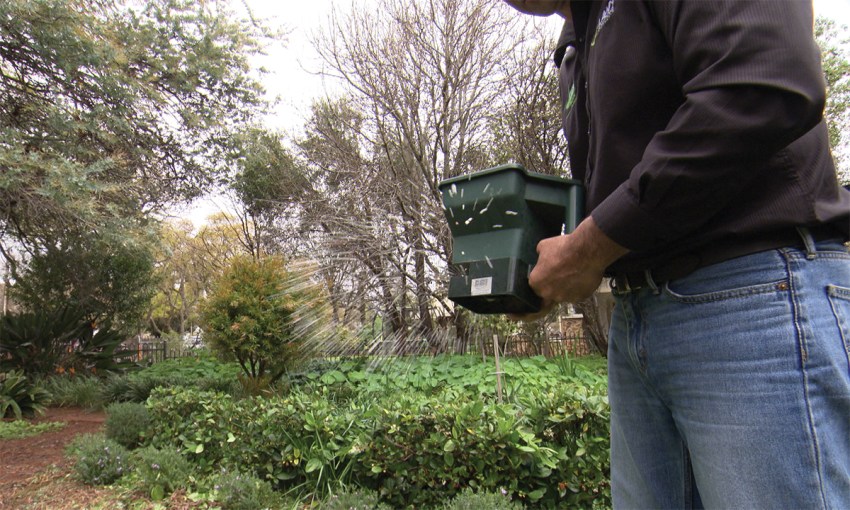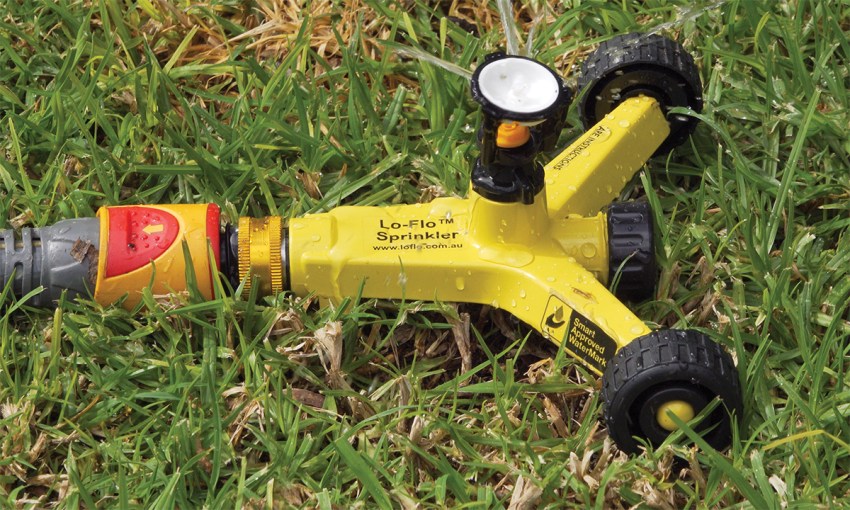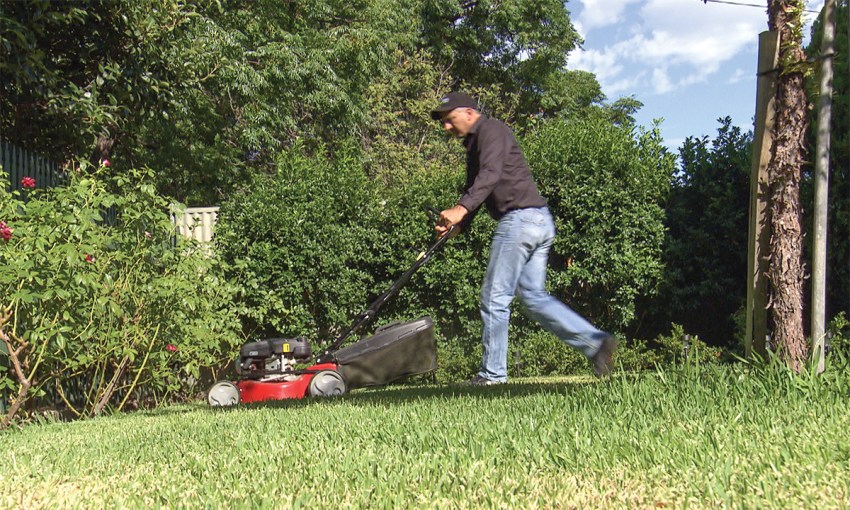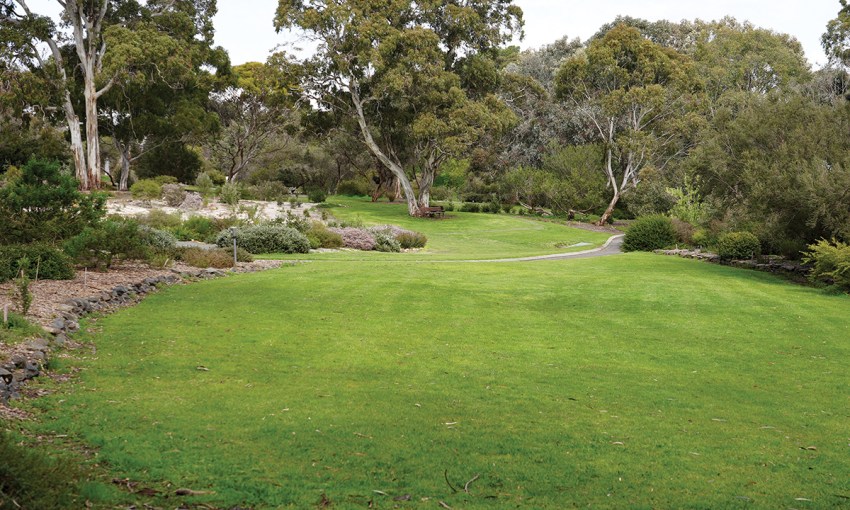In back yards across South Australia, lawns provide a living green carpet for generations to walk, run, tumble, lay and play. Whether it's the smell of freshly cut grass or the feel of soft turf beneath your bare feet, everybody loves a lawn.
How to love your lawn
Apart from being totally good looking and green, there are plenty of reasons why lawns have become an integral part of our lives. A lawn encourages the family, especially children, to spend more time outdoors being active, helping turn screen time into green time. Plus, a well-maintained lawn can add tens of thousands of dollars to the value of your home.
As well as being aesthetically pleasing, turf also plays an important environmental role. In an increasingly heated and hardscaped world, lawn draws up moisture and naturally cools the surrounding area. Planted around a house, swathes of grass will help drop the temperature and offer an organic solution to reducing your summer energy bills.
As rain falls, turf absorbs and filters any runoff, channelling water deeper for its own and other plants’ benefit, rather than seeing valuable liquid disappearing down drains. Lawn absorbs noise too, so if you are looking for the quiet life, roll out the turf. Lawn is also an oxygen factory, with a 200 square metre piece of turf providing enough brain-boosting oxygen for a family of four.
Whether you are a fanatical lawn lover or a humble home gardener, spring provides the perfect time to tweak your turf for summer and beyond. Growing good turf is more than just running a mower over it every few weeks and there are a number of important ingredients needed to produce a lovely, lush lawn.
Weeds
Just like your garden beds, weeds find a ready home in lawns, too. Many of us are faced with a sea of weeds sitting proud above the prostrate turf, all competing for the same food and water. A patchy lawn with bare spots is particularly prone to weed infestations. The key to successful weed control is coverage. The thicker and healthier the lawn, the more it can supress weed growth. Stopping weeds from flowering and seeding will also help reduce that perennial problem.
Many of us would remember having to hand-pull dandelions from abrasive buffalo lawns as a kid. While hand pulling weeds is still an option where the odd weed pops up, when there is an infestation, most gardeners turn to an off-the-shelf remedy. If your issue is with broadleaf weeds such as thistles and clover, selective herbicides like Yates Weed n Feed target only those weed types and leave grass untouched. Light green tufts of winter grass stand out and look unattractive. Because this weed is a grass, a different selective herbicide such as Munns Professional Winter Grass Killer is needed to control.
If you have buffalo grass, always select “buffalo-friendly” herbicides to avoid any potential damage to that variety of turf.
For the best knockdown, let the weeds grow before you spray. The more weed leaf canopy, the more spray will be absorbed. Leave for around a week before mowing to allow the chemicals to translocate through the weed.

Feeding
Lawn is made up of tens of thousands of little plants. If want your turf to thrive and put on a show for the festive season, then now is the time to fertilise.
Warm season grasses such as couch, buffalo and kikuyu – South Australia’s most planted varieties – are now active and hungry. You’ll find a wide number of specially blended lawn fertilisers at your local garden centre, ready to supply turf with the right balance of nutrients.
Apply fertiliser to dry grass to avoid any potential burning of the blades, especially with chemical-based products. You can toss handfuls over the lawn, but this can lead to quicker growing strips where more fertiliser lands. Hand spreaders will broadcast evenly as you walk up and down the lawn turning the handle. Hose on liquid fertilisers that you just click and spray, such as Seasol for Lush Lawns, have been embraced by many looking for a quick and easy way to feed and forget.

Watering
The amount applied and frequency of watering directly correlates to the type of grass grown. Tufting types such as fescue and ryegrass require more water more often over the hotter months, while the running grasses of couch, buffalo and kikuyu, are able to cope with extended watering intervals. Hence their preference in South Australian home gardens! Also, keep an eye out for the new TifTuf Hybrid Bermuda Grass, noted for its improved qualities in drought, shade and wear tolerance.
The key to successful lawn watering is deep soaks less often. Rather than a light sprinkle every few days, best to bank that water and deliver in a longer dosing on a weekly to fortnightly basis. Avoid flooding and run-off when watering. Sprinklers such as the Lo-Flo Sprinkler are water and money savers, producing rain-like droplets that gently soak in and work at high and low water pressure, even directly from a rainwater tank without a pump.
Light watering wets the topsoil only, while an increased volume of water has the ability to move through the soil, beyond the roots and encourage them to follow. The deeper the roots delve, the more protected they are from heat and damage. Longer, deep watering develops drought tolerant and better performing lawns, year-round.
Pests
While not strictly classified as a “pest”, your dog can do serious damage to the lawn through digging or spending a penny. Bored dogs are destructive ones, so adding additional walks or exercise along with providing interactive toys, especially food incorporated types, plus a dedicated digging sandbox will help reduce the holes. As for burn marks left by urine, hosing the area with water once they’ve relieved themselves will dilute that nitrogen-rich pee, but this can become a time consuming and frustrating task. Training your dog to toilet in an alternative place is preferred. Have a chat to your vet next time you see them for more ideas and assistance.
Underground root feeding grubs are a major issue for lawns. If you notice birds, especially magpies, pecking the grass, fair chance the dreaded black beetle is about. More prevalent over spring, summer and autumn, early intervention in spring will help stop large portions of your turf thinning out and dying. Giving the lawn a heavy watering can bring many adult beetles to the surface and give your local birds a tasty feast. When black beetle issues do persist, applying Yates Grub Kill & Protect for Lawns can protect lawns for up to six months through its Acelepryn technology that targets specific beetles and grubs in their larval and adult stages.

Mowing
Whether you are using a hand, two-stroke, electric or the latest battery-powered mower, sharp blades are most important. If it’s been a while since you’ve changed or had them sharpened, time to get that sorted. Where blunt blades smash and bash causing ragged and damaged grass, sharp ones cut cleanly leaving the grass neat and healthy.
Always mow before feeding, otherwise you’ll end up with a catcher of valuable fertiliser. Matching mowing height and lawn type is important. Cool season grasses such as fescue and ryegrass varieties are best left longer than the warm season kikuyu, couch, buffalo and hybrid Bermuda varieties, for both the look and cool shading of roots. Also, with each mowing remove no more than one third of the turf to avoid stressing out the grass.
This story first appeared in the October 2021 issue of SALIFE magazine.



